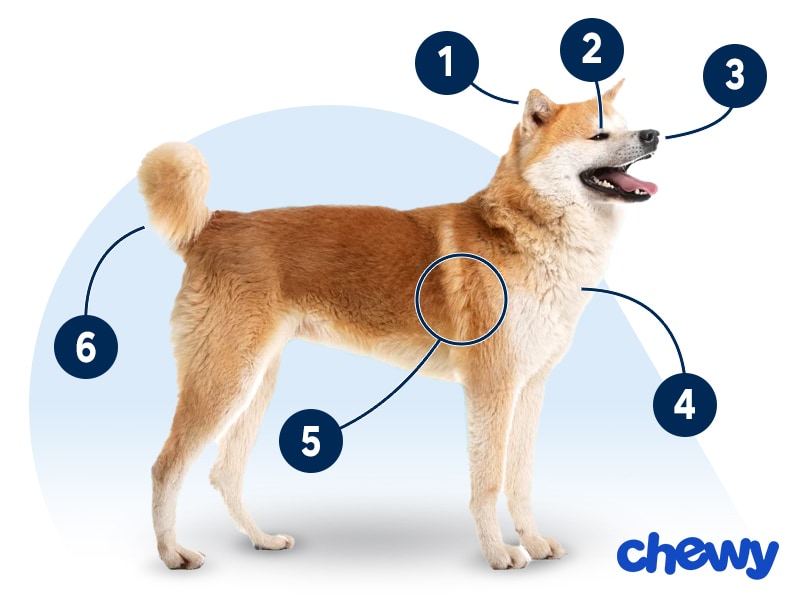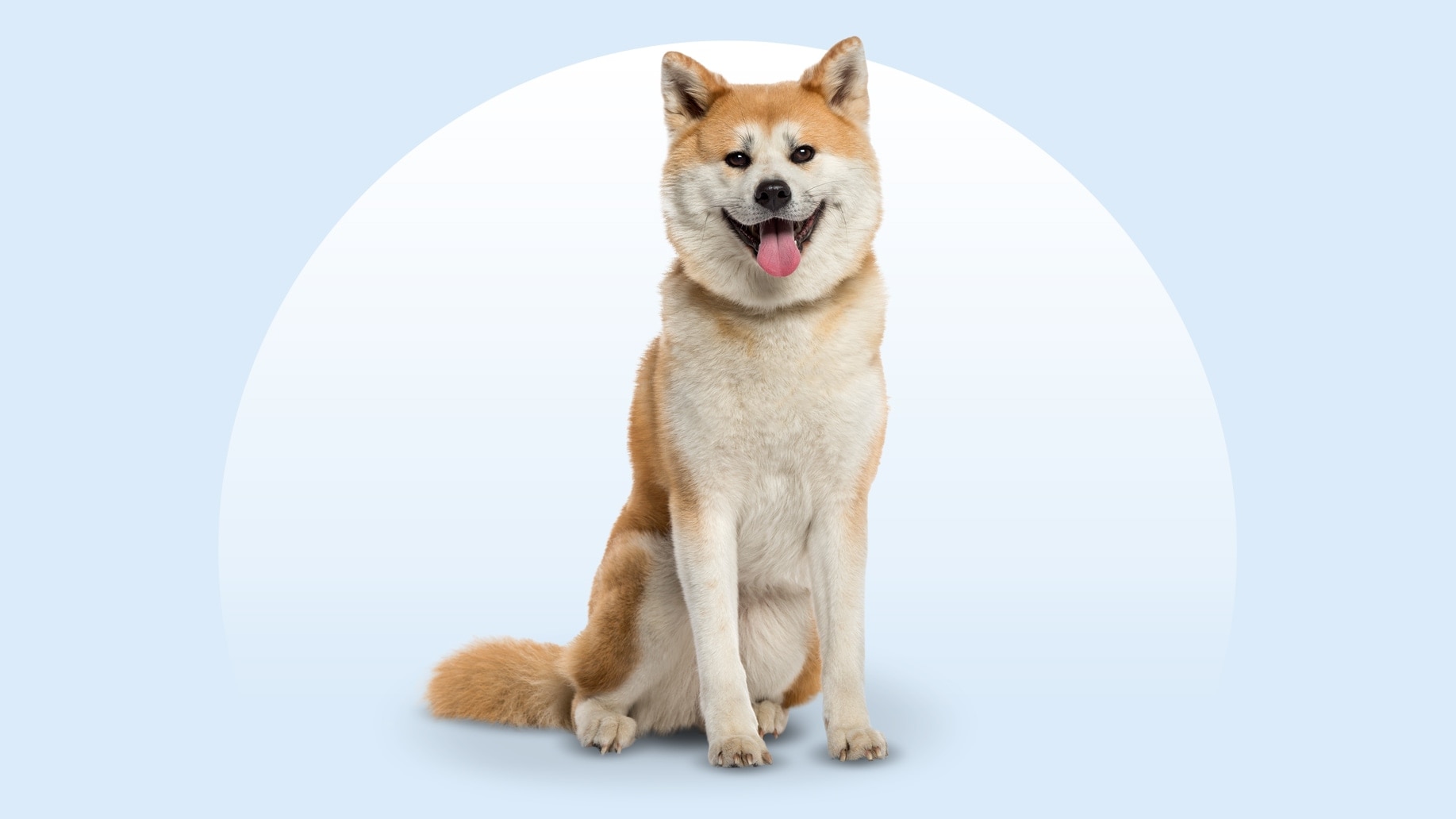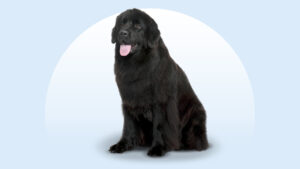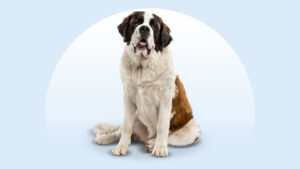Akita
Updated December 15, 2025
Akita
Updated December 15, 2025
Devoted and chill, the Akita is a nature-lover who adores spending time outside with their person. A true introvert, these dogs need their quiet time and don’t love noise or crowds; they’ll bond with someone who feels the same—and loves the fun of hiking through the woods together.
Clever, Introverted, Outdoorsy
70–130 pounds
24–28 inches
10–14 years
Black, Fawn, Red, White, Brown Brindle
Do you secretly get excited when people cancel plans? If so, the Akita might be your ideal pup.
It’s not that this dog dislikes people; it’s just that they’re an introvert at heart, and they need their quiet time. You’ll find them either happy and cozy at home with you (no strangers, please) or alert and happy in the great outdoors. Who needs a big crowd when you have each other?
Akita Characteristics
Akita Appearance
With a tail curled high and ears alert, these pups always look ready for adventure (even if they’d rather curl up with you).
When full-grown, the Akita’s size can be 100 pounds or more, and their plush double coats can be solid or mixed with brindle (fur with brown or tan stripes) or pinto (large patches of color). Some even have a mask highlighting their intelligent eyes.

- Ears
Akitas’ ears stand tall and alert. They’re small in comparison to their head size, and they’re shaped like rounded triangles.
- Eyes
Akitas’ intelligent eyes are small and dark brown, with a triangular shape.
- Nose
They have a broad nose that’s typically black but might be a lighter shade on some dogs.
- Coat Length
Akitas are double-coated. The undercoat is soft and dense, while the outer coat is straight.
- Coat Color
The Akita dog breed comes in a variety of colors, including black, brown, fawn, red, silver, and white. They may have brindle or pinto markings as well as masks that show off their eyes.
- Tail
They carry their tail high with a distinctive curl, often over their back. Their tail has longer fur but without a feathery plume.
Akita Temperament
Quiet and dignified, Akitas are loyal pups who love spending time with their families. They’re smart dogs and fairly active, so they enjoy both mental and physical challenges, like going on long hikes together or solving doggy puzzle toys.
Despite their high energy levels, they’re not social butterflies. In fact, Akitas often feel cautious around strangers. Because of their aloof personality, they’ll benefit from extra socialization and training while growing up.
Even with socialization and training, all interactions between your dog and other pets and kids should be supervised. Children also need to know how to interact with dogs and to respect this breed’s boundaries (no pulling on their fluffy tail, please).
How to Care for a Akita
Akitas need extra grooming when the seasons change and shedding increases, but they are surprisingly adept at keeping themselves clean. They’ll need regular training and socialization, which they’ll probably excel at (they’re very clever dogs).
Grooming
Training
Diet
Exercise
Environment
Akita Health
The typical Akita lifespan is 10–14 years. Here are some health issues to be aware of.
- Bloat and gastric dilatation-volvulus (GDV): Bloat is a life-threatening condition that occurs when the stomach distends with air and/or food. A serious complication of bloat is gastric dilatation-volvulus, when the stomach twists on itself, cutting off blood supply to the organs. Be alert for symptoms and take your Akita to the vet immediately if you suspect bloat or GDV—the condition becomes deadly surprisingly quickly.
- Hip dysplasia: Hip dysplasia is when the ball and socket of the hip and thigh bones doesn’t properly fit. It’s an inherited condition that can be made worse if a dog is overweight, and it eventually leads to arthritis and pain. More severe cases may require surgery, but the condition is often treated with medications, joint supplements, special diets, weight management, and/or physical therapy.
- Hypothyroidism: Hypothyroidism is one of the most common endocrine disorders in dogs. It can be diagnosed with a blood test, so thyroid levels should be a normal part of screening blood work as your dog ages.
- Myasthenia gravis: Myasthenia gravis is an autoimmune disorder that leads to muscle weakness and affects body movements (and sometimes cognition). See your vet if you notice differences in your dog’s physical or mental abilities. Although there is no cure, this condition can be managed with medication.
- Progressive retinal atrophy (PRA): PRA leads to blindness in dogs. While there is no cure, pups who lose their eyesight tend to adapt well and can still live full, happy lives.
- Sebaceous adenitis: This is a skin condition that affects the oil glands beneath a dog’s skin. Symptoms of sebaceous adenitis include hair loss, dandruff, scaly skin, and skin infections. It’s treated with supplements, topicals, and medications.
- Von Willebrand disease: Akitas are susceptible to von Willebrand disease, a bleeding disorder where the blood doesn’t clot properly. There’s no cure, so your vet may recommend a stress-free lifestyle that avoids places where your dog may get bruised or scratched, such as hikes or the dog park.
Akita History
The Akita’s origins date back to 17th century Japan, where they were bred to hunt deer, boar, and even bears. Close to extinction a few times, they came back from the brink and are a symbol of health and happiness today in Japan. In fact, they are one of seven Japanese dog breeds designated as a national monument, according to the Akita Club of America.
Activist and author Helen Keller, who lost her hearing and sight after a childhood illness, was gifted an Akita when she visited Japan in 1937; she brought the dog back to the U.S. with her. After World War II, some American soldiers brought Akitas when they returned home.
The Akita was officially recognized by the American Kennel Club (AKC) in 1972. Currently, there are two main types of Akitas: the more commonly known American Akita (or just Akita) and the Akita Inu, also called the Japanese Akita. The AKC considers these two separate breeds.
Akita puppies are typically anywhere from $600–$2,000. If you choose this route, pick a responsible breeder.
You can also rescue an Akita. Look for an Akita rescue organization, keep an eye out at your local shelter, or search Chewy’s database of adoptable dogs in your area.








